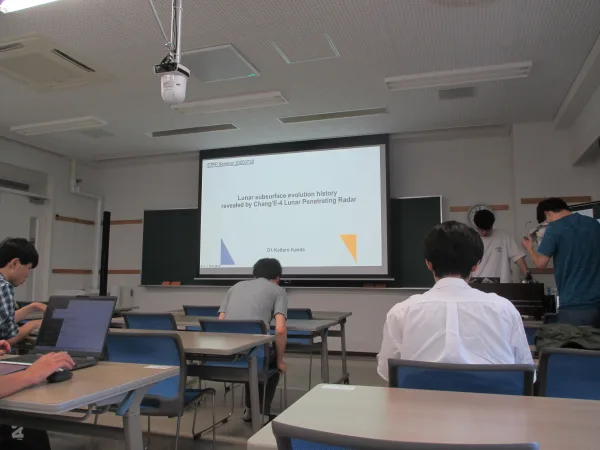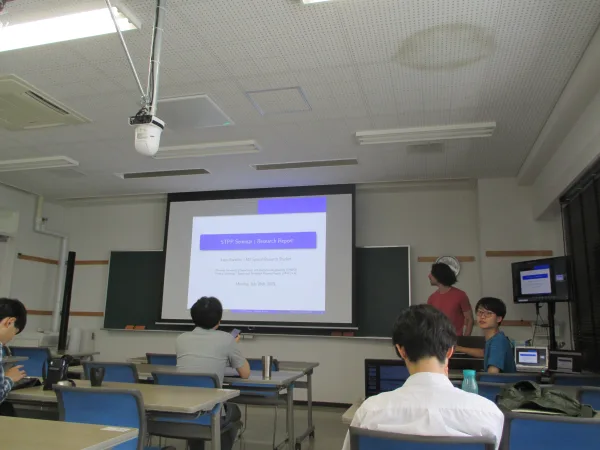令和7年度第14回STPPセミナー
令和7年度第14回STPPセミナー
2025/07/28


発表者:神田 恵太朗 (D1)
発表タイトル: Lunar subsurface evolution history revealed by Chang’E-4 Lunar Penetrating Radar
要旨:The lunar subsurface preserves its history. The lunar surface has experienced meteorite impacts for billions of years, but the subsurface is protected against them. The way to prove the subsurface is limited, and one of them is ground penetrating radar (GPR). In lunar exploration, three GPR observations were conducted by Chang’E missions, and we have been analyzing the data of the Chang’E-4 (CE-4) Lunar Penetrating Radar (LPR).
In this study, we focused on hyperbolic echoes in the CE-4 LPR data, which indicate the presence of subsurface reflectors. We found 188 echoes in the uppermost regolith layer. By confirming their polarity, we concluded that 116 of them originated in subsurface rocks and 72 in subsurface voids. Based on 116 subsurface rock echoes, we obtained the first subsurface RSFD. We also investigated echoes’ spatial distribution. Based on these findings, we discussed the evolution history of the CE-4 landing region.
発表者:Lapo Bartolini (Researcher)
発表タイトル: Numerical Simulation of a Bistatic Radar for the Sounding of Comet Nuclei
要旨:Understanding the internal structure of small bodies such as comets and asteroids is crucial for reconstructing their formation history. In particular, distinguishing between rubble-pile and pebble-pile comets can inform us whether they were formed through high-energy re-accumulation or gentle accretion of pebbles and dust. As proposed in the Next Generation small-body Sample Return (NGSR) mission, a bistatic radar system on dual orbiters could enable such structural investigations.
In this study, we assess the feasibility of such radar configuration using full-wave electromagnetic simulations performed with the open-source FDTD software MEEP. The simulated scenario is modeled with realistic parameters derived from the proposed NGSR mission. Such scenario includes a 30 m diameter comet and a radar system operating at 160 MHz with a 40 MHz bandwidth. The distance of the main orbiter from the comet is arbitrarily large, and the distance of the sub-orbiter is 450 m. Since the two orbiters are far from the comet, a 36×36 m near-field box is set around the comet for simulation purposes, with a plane wave source inside of it modeling the wave transmitted by the main orbiter. From the simulated near-field, we then derive the far-field at three sub-orbiter positions: A (0° azimuth, directly on the opposite side of the comet), B (22.5° azimuth) and C (45° azimuth). In the rubble-pile media model, the permittivity of the base medium is 2, and that of rocks in it is 4. In the pebble-pile media model, the permittivity of the base medium is 3, with no other media in it.
In the pebble-pile case, the signal at position A is about 20 dB stronger than at positions B and C, while showing minimal angular variation. In contrast, the rubble-pile case exhibits similar signal strength at all three positions while showing significant angular variation, suggesting strong diffraction due to internal heterogeneity. This contrast highlights the potential of bistatic radar observations to discriminate between internal structures, supporting the viability of a bistatic radar system onboard the NGSR mission for the characterization of comets. Ongoing work aims to determine whether true tomographic imaging can be achieved based solely on far-field measurements across the comet’s volume.

